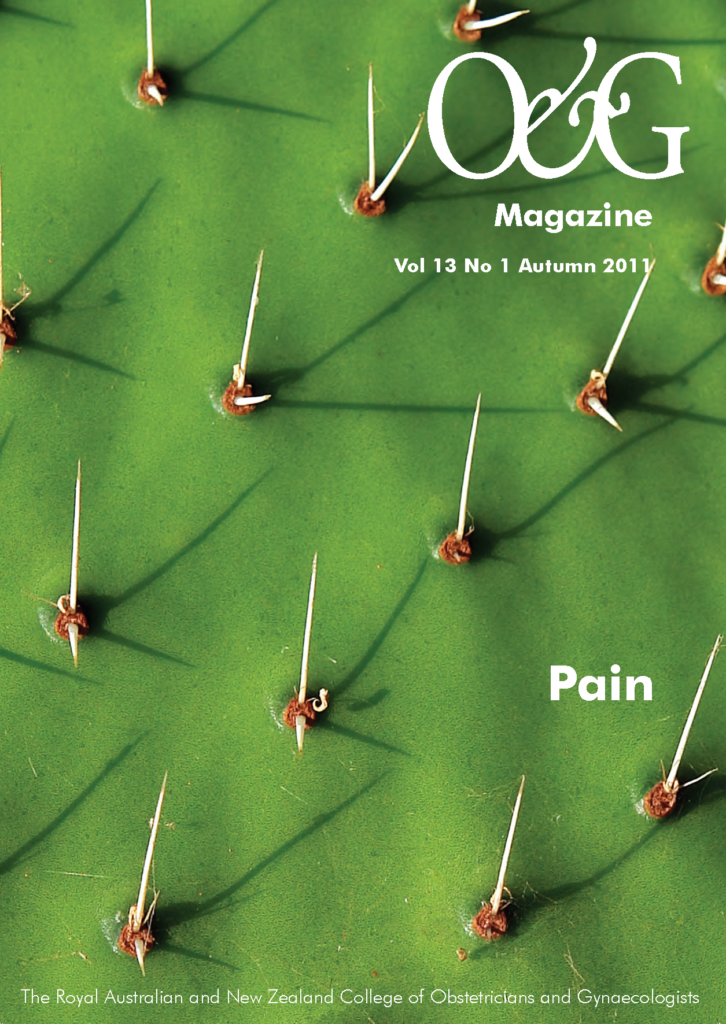Pain is a thread that runs through many of our interactions with the women we care for. In gynaecological practice, there is the cyclical pain of dysmenorrhea and endometriosis or the acute pain of ovarian torsion. Perhaps there is pain where there was no pain before, nibbling at the patient’s peace of mind – ‘is it a cancer?’ – until they can delay assessment no more.
Early in pregnancy, pain may be the harbinger of miscarriage, later on it may signal abruption or preterm labour. Occasionally, pain is awaited eagerly. We nod approvingly at ‘good strong contractions’, replacing the tightenings of early labour. Most often, we seek to give relief from the burden of pain. From well-chosen words, through gentle touch or warmth to the anaesthetist’s drugs and needles, or the surgeon’s knife, our patients seek our help to relieve their pain.
The theme of this issue of O&G Magazine is pain. Among the articles is an up-to-date review of analgesia in labour by Prof Michael Paech, and Honorary Fellow of RANZCOG. This article, and others, including those on dyspareunia and chronic pelvic pain, will be of practical interest to the readers of O&G Magazine and further our ability to help our patients.
Broadening this issue’s focus on pain is an attempt to answer a question that I imagine has crossed many of our minds – does a fetus feel pain? In labour at term it seems intuitively likely that the fetus feels pain. Babies cry as they receive a vitamin K injection after birth; it seems unlikely that they did not feel the fetal scalp electrode placed an hour before. What about earlier in pregnancy? Does a ten-week fetus feel pain or a 20-week one? Even if they withdraw from noxious stimuli, does a fetus experience pain in the same way as a neonate, or an older child? Luke la Hausse de Lalouvière, provides a thought-provoking account of research into this question. Whether or not readers agree with the conclusions drawn from this research, the article allows us to ponder the question armed with scientific evidence that may be new to many of us.





Leave a Reply